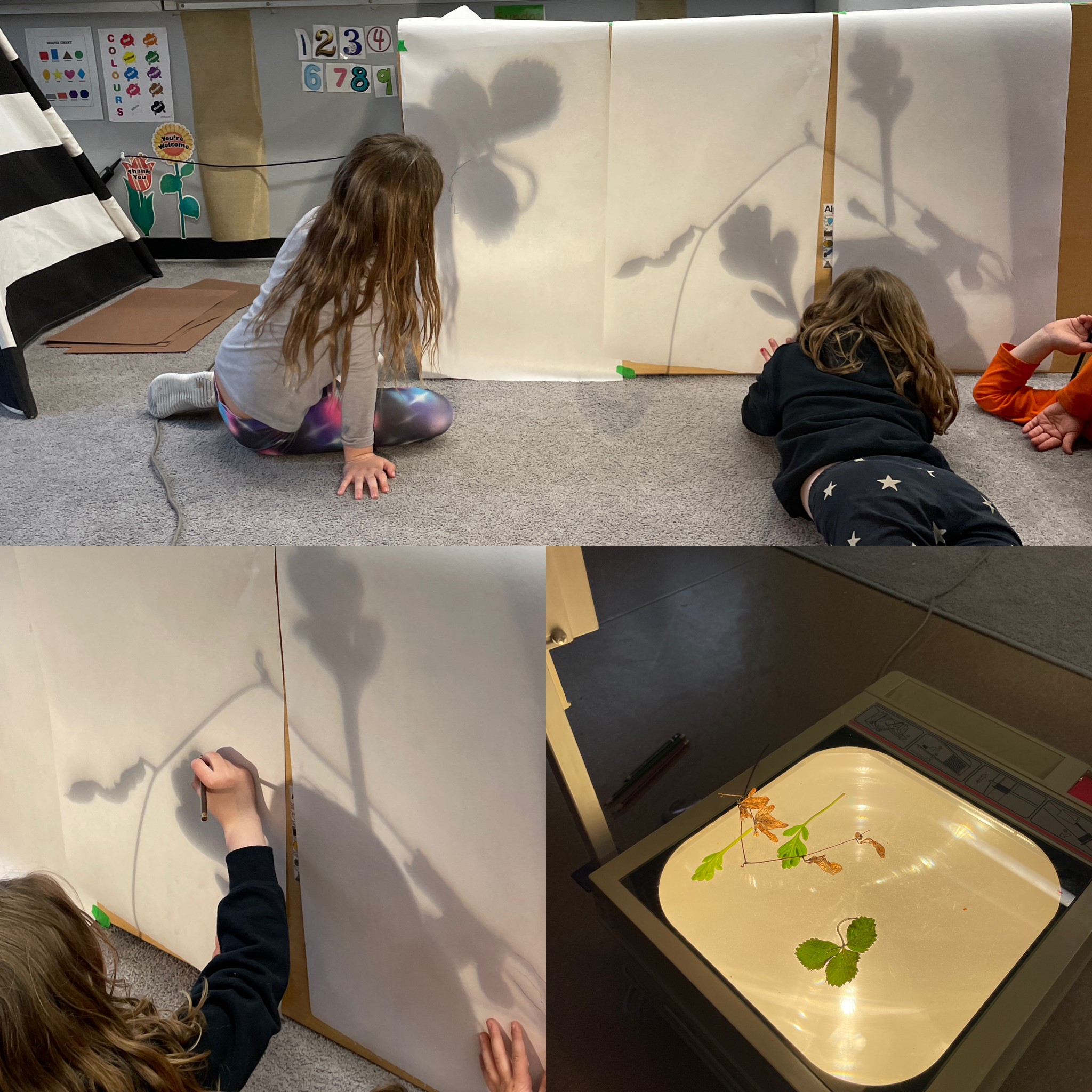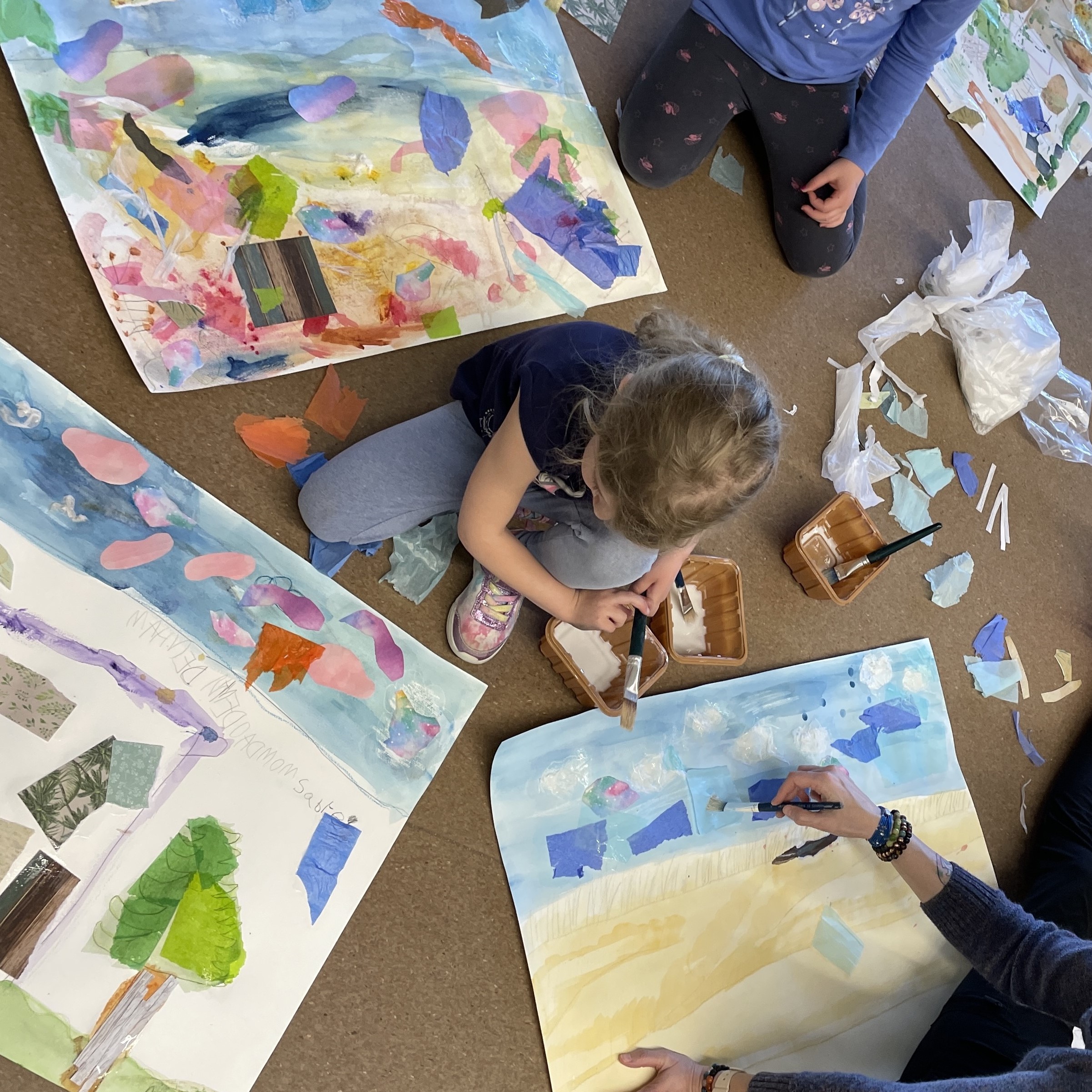If you asked a group of rural students what an artist is, you might get many different answers. “‘Artist’ can be a vague idea to students—something we see in movies or in books, but not often in real life in a small town,” says Deadra Oblander, a teacher at Bulyea Elementary School. Fortunately, students in the community recently had the opportunity to work with Regina artist Shaunna Dunn on a special project funded by an Artists in Schools—Projects Grant from SK Arts.
“The project allowed students to work with a practicing artist and develop their creative skills. Shaunna’s answers and methods were different than those of ‘regular’ teachers, which allowed students to learn and develop in new ways,” says Oblander.
Dunn worked with Kindergarten to Grade 6 students to create “A Community of Ideas, an Installation.” They presented the project at a community event, a joyful opportunity to share their work with each other and their parents, grandparents, and community members.
Bulyea arch installation.
A Community of Ideas
The children were excited to have a guest artist at the school. Dunn used theatre games and “tea time” to foster connection and led workshops that encouraged experimentation and hands-on learning. She focused on three elements essential to the artists’ role: seeing (using our eyes), feeling (using our hearts), and making (using our hands). She introduced students to artistic practices they may not have been familiar with, like social practice, installation and found object sculpture.
At first, many kids felt they weren’t good at art. To address this misconception, Dunn focused on creativity and creative confidence, encouraging students to use materials without expecting a final product. “Children have an incredible capacity for divergent thinking that begins to decline as we age,” she says. “During the project, I saw students’ creative freedom expand. Most importantly, I saw how confident they were in exploring their ideas and collaborating and how excited they were to share what they’d done with their friends and families.”
The students responded enthusiastically to Dunn’s approach. A third grader states, “Shaunna was nice and had a good imagination for an adult.” A fourth grader says, “It brought me joy getting help from Shaunna.” A sixth grader added, “I learned about different art techniques and tools. Sculpting and painting brought me joy.”
Oblander explains, “The students were so committed to the project and worked hard on their contributions. They got their families involved, took projects home to work on and brought objects and artifacts from home.” She notes that the winter months are tough for kids in Bulyea—it’s cold and the playground is often too slippery to run around. “The winter doldrums were significantly reduced because students were so inspired with this project and working with Shaunna. Every single day, they asked, ‘Can we please work on our art project today?’”
Show Time
It was all hands on deck when mounting the show for public presentation. Work was suspended from the ceiling and mounted on walls, and kinetic art was installed for audience interaction. Students even brought in lighting from their homes to illuminate the space. When people entered the gym-turned-gallery, they commented time and time again, “It doesn’t even look like the gym!”
Grades 3/4 students created an immersive installation at the centre of the room with an archway, forest, imaginal 3D map of Bulyea, a video of a performance, a wheelchair-accessible bus, and two “cozy spaces”: one that allowed participants to have quiet time if they felt overstimulated and another that was student-led and focused on snacks and conversation.
“I think presenting the students’ work in this big way showed how valuable their efforts and ideas are and how important it is that we make space to look and listen to those ideas,” says Dunn.
Oblander encourages other teachers to apply for Artists in Schools grants to bring practicing artists into their own classrooms. “The professional development and student learning opportunities are rich. Teachers can learn about arts education from a professional, and this relieves so much stress. Students become so inspired and watching them learn and create is uplifting. Projects like this build community spirit!” she says.


A LIVE Experience with Arts Education
Another program that brings artists into schools is LIVE Arts, where any classroom in Saskatchewan can participate in broadcasts throughout the school year. This dynamic distance education program focuses on Grades 1 to 9 students and supports the Saskatchewan Arts Education Curriculum. Teachers sign up for grade-specific programs; then, professional artists connect simultaneously with teachers and students in multiple schools across the province for a LIVE experience with arts education. It’s more than simply a broadcast, though; it offers hands-on activities for students and educational guides for teachers. It’s the next best thing to having an artist physically in the classroom.
Both teachers and students enjoy taking part in the program. One teacher commented, “The students were super engaged and loved that it was ‘live’. They were especially thrilled that you read two of our students’ pieces!” Another teacher remarked, “I have had nothing but positive feedback from the classes that attended the presentations. The facilitator was a wonderful presenter, and I know that the kids got a lot from her.”
Visit the LIVE Arts website for the 2024-25 school year programming schedule, which includes hip-hop music and dance, land-based art and eco-printing, visual art zines, songwriting, storytelling, painting, and theatre.
For more information, contact SK Arts Program Consultant Jody Greenman-Barber at
